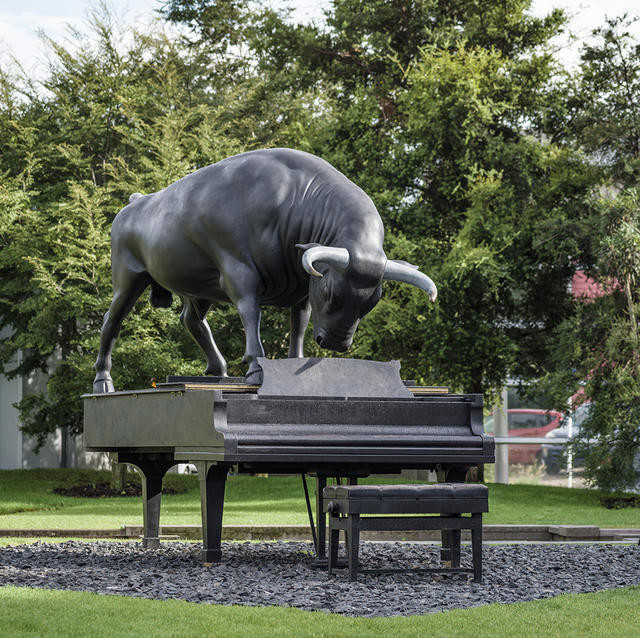B.
Venice Biennale
Behind the scenes
It's taken me a while to write about Venice, but the show's still on and the first week of the 2011 Biennale in this memorable and surprising city still fresh in my mind. I was New Zealand's commissioner again and it was a proud moment for us all as visitors poured in – and stayed to listen to the continuous concert – during the Vernissage (the opening few days, in 2011 from 30 May-3 June) of the longest-standing and most prestigious international art exhibition.
Michael Parekowhai's On first looking into Chapman's Homer is an individual triumph and those involved in the selection, preparation, and the all-important funding of this presentation were thrilled at how 'at home' it looked in the privately-owned Renaissance Gothic Palazzo Loredan dell'Ambasciatore on Venice's famous Grand Canal, at how his Chapman's Homer looked as if it had always been in the walled garden. You can see and can hear more of it at the New Zealand at the Venice Biennale 2011 home page.
Parekowhai is a master of surprise, but I was amused when he engineered to see me alone when I got to Venice. We had coffee in a piazza near the New Zealand venue before I saw the works installed, so he could let me know that he had 'changed it'. The presentation had been first unveiled and photographed for the catalogue in a Henderson warehouse in Auckland, when pianist Michael Houston played the carved piano for Venice patrons on 13 March. It was sleek and an elegant shiny black then. But before being air-freighted to Venice, the Steinway piano was sanded right back and painted a strong red. An extraordinary transformation – a real surprise; but also somehow not. It began to reference the colours of Maori carving and it was intriguing how much more the carved elements stood out in their new livery. Coincidentally, the red and gold colour of the brass lettering (what alchemy that was!) were transformed into the colours of the Venetian Republic.
I had to adjust my thinking and incorporate first thoughts about the new colour into my opening night speech. I suggested this piano might now be the cloak of Michael Parekowhai, toreador extraordinaire – asserting his arrival with this flashy red between the two bronze bulls; taking on the challenges of European culture, past and present; inflecting his presentation with his unique 21st century Maori and Pakeha sensibility.
Although much of the Venice Biennale continues until 27 November, the New Zealand presentation finishes on 23 October. If you're in Italy before then, make sure you plan a visit.
